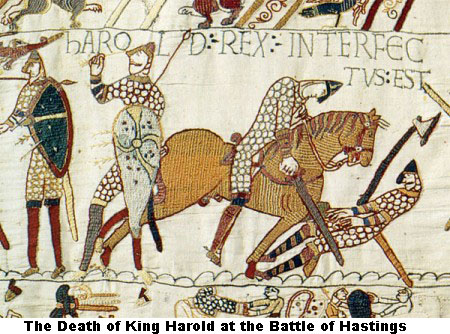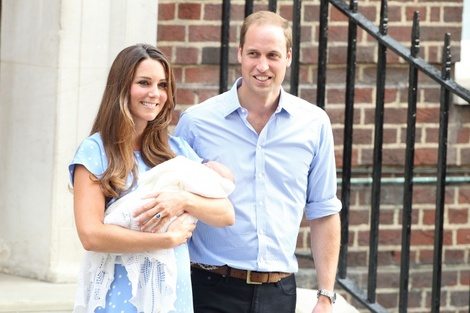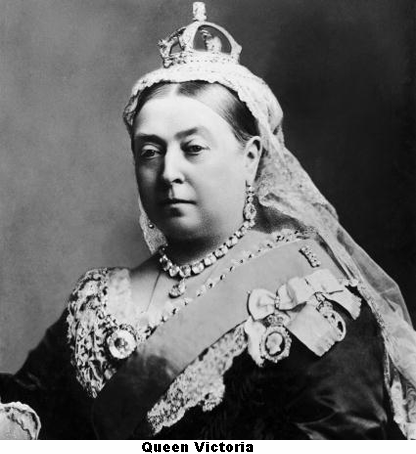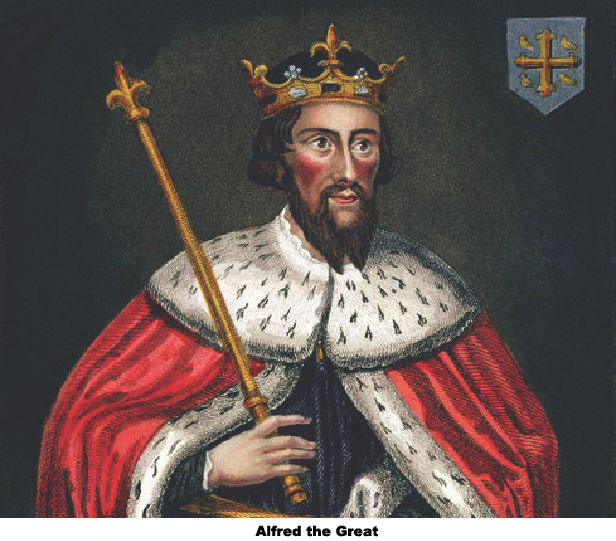Prince George Latest in Long Line of Kingly Names
If young George, who as of 2013 is now the Prince of Cambridge, becomes king one day, he will be King George VII. The heir to the British throne is currently Prince Charles, who would be King Charles III. William, Charles's oldest son, is second in line and would be King William V. England has already had six kings named George. The first four were German, from the land of Hanover, and they ruled from 1714 to 1830. George III was the English king during the American Revolutionary War. George V was king during World War I. George VI was king during World War II. (George VI was also the subject of the 2010 movie The King's Speech.)
Also the name of eight English kings was Edward. Edward I, Edward II, and Edward III ruled 1272–1377. The reigns of all three kings (especially Edward I) were notable for their struggles to conquer Scotland and Wales. Edward III was on the throne during the first 40 years of the Hundred Years War (which actually lasted 116 years). Edward IV and Edward V ruled 1461–1483, during the Wars of the Roses. (Edward V ruled less than one year and was never crowned.) King Edward VI succeeded his father, Henry VIII, on the throne and ruled 1547—1553. Edward VII became king in 1901, when his mother, Queen Victoria, died, and ruled for nine years. Edward VIII became king in mid–1936 and was king for just six months, giving up the throne to marry an American woman. William the Conqueror, the Norman knight who defeated King Harold II at the Battle of Hastings in 1066, styled himself William I. His son was William II, known as William Rufus. Together, they ruled 1066–1100. William III (1688–1702) was a Dutchman who, with his queen, Mary, became rulers of England in the Glorious Revolution. William IV was a son of George III and ruled 1830–1837. Richard was the name of three English kings. Richard I (1189–1199) was a son of Henry II; known as Lionheart, Richard I fought in the Third Crusade and is immortalized in the Robin Hood stories. Richard II was a grandson of Edward III and ruled from 1377 until he was removed as king in 1399. Richard III (1483–1485) was the brother of Edward IV and headed the Yorkists during the War of the Roses. He was killed at the Battle of Bosworth, after which England crowned as its king Henry VII. James and Charles were the names of two English kings, each. James I had been James VI of Scotland when he was crowned king of England in 1603. (Notable achievements during the rule of James I include the publication of the King James Bible and of many works by William Shakespeare.) James I ruled until 1625 was succeeded by his son, who was Charles I. This was the king who lost his head in 1649, during the English Civil War. The next king, Charles II, was the choice of the English people after the end of the Civil War and the rule of Oliver and Richard Cromwell. Charles II became king in 1660, in what was termed the Restoration, and ruled until 1685. He was succeeded by his brother, who was James II. This king ruled just three years before giving way to William and Mary and the Glorious Revolution. Elizabeth was (and is) the name of two queens of England. Queen Elizabeth I, a daughter of Henry VIII, was on the throne from 1558 to 1603. England defeated the Spanish Armada, in 1588, when Elizabeth I was queen. Elizabeth II is the reigning monarch of the United Kingdom.
England had one Queen Victoria. Victoria is the longest–serving English monarch, reigning from 1837 to 1901. A hugely influential queen, Victoria presided over a great expansion of the English/British world presence (including the advent of the Industrial Revolution), so much so that her reign is described as the Victorian era. Queen Anne was the daughter of Charles II. She ruled 1702–1714 and was succeeded by the Hanoverian Georges. Her reign was dominated by a wider European struggle called the War of the Spanish Succession. John was the name of one English king. The son of Henry II, he was on the throne 1199–1216. He was the monarch who affixed the royal seal to the Magna Carta and is immortalized as a villain in the Robin Hood stories. Stephen was the name of a king who ruled 1135–1154. He was king during a period of great civil war. Other lists of English rulers include the Saxon kings, many of whom had unfamiliar-sounding names. Among these were a number of Ethel-s, a few Ed-s, and an Eg-. First, there was Egbert, who is regarded as the first king to rule over all of the kingdoms of Anglo-Saxon England (as opposed to all of England). The Angles, Saxons, and Jutes had been settling in England for many, many years before this. The Anglo-Saxon term for "ruler of the British" was Bretwalda. Egbert was not the first Bretwalda but is considered to be the first Saxon king (827–839).
Then, it was time for the Eds. Alfred's son Edward took the throne in 899 and held on to it until 924. In a brief return to the Æthels, Edward's son Æthelstan became king and ruled for 15 years. He had a smashing victory over a major Viking kingdom, giving him control of nearly the entire island, and is regarded by many historians as the first official king of all of England. Then, it was back to the Eds as Edmund, Eadred, Eadwig, Edgar, and another Edward (known as the Martyr) took the title of English king. As before, these kings struggle to maintain their political and military status quo. After another Æthel, Æthelred II (known as the Unready), ruling 978–1016, it was back to the Eds for Edmund II (known as Ironside). This King Edmund didn't last long on the throne (just about a year). He was replaced by one of the most well-known kings of England, who wasn't born in England or in Saxony. This was Canute, a Danish king who invaded England in 1015 and became the English king the following year. He sat on the English throne for 20 years and was succeeded by his two sons, Harold I (1035–1040) and Harthacanute (1040–1042). The Saxons enjoyed a brief return to glory in 1042, when Edward (known as the Confessor) took the throne. He ruled for 24 years but left no natural successor. The ensuing power struggle saw Harold II crowned king. William of Normandy, a powerful knight living in what is now France, claimed that King Edward had promised him the throne. William and a large force invaded England and met Harold and his army on the field of battle. This was the famous Battle of Hastings, during which Harold was killed. Harold and his army had come to Hastings directly after a hard-fought victory over an invading Norwegian force led by Harald Hardrada, way up north at Stamford Bridge. The Saxons then marched straight south to fight the invading Normans. The result was a Norman victory, and William assumed the kingship. This was the last successful invasion of England.  A complete list of the rulers of England and the years they ruled is below.
|
|
Social Studies for Kids
copyright 2002–2025
David White



 The royal baby, the first great–grandchild of Queen Elizabeth II, has the decidedly royal name of George Alexander Louis. (For the record, the last name of his father, Prince William, the Duke of Cambridge, is Mountbatten-Windsor.)
The royal baby, the first great–grandchild of Queen Elizabeth II, has the decidedly royal name of George Alexander Louis. (For the record, the last name of his father, Prince William, the Duke of Cambridge, is Mountbatten-Windsor.) The name of the most kings of England was Henry.
The name of the most kings of England was Henry.  Two queens named Mary ruled England. The first,
Two queens named Mary ruled England. The first,  Then came
Then came 
